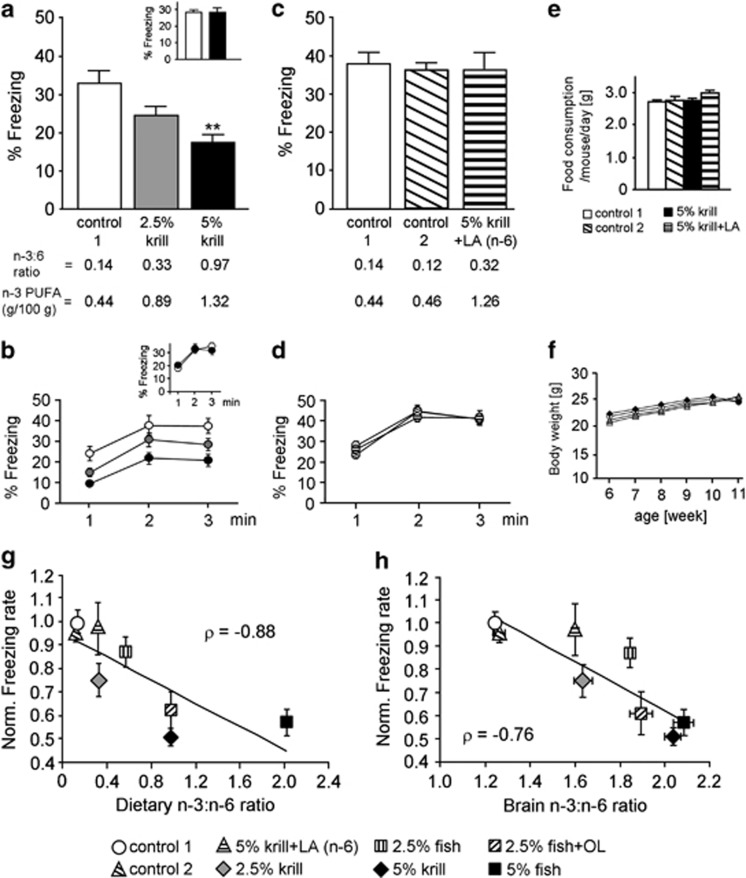Figure 1.
Dietary ratio of n-3 to n-6 polyunsaturated fatty acids (PUFAs) influences contextual fear memory. (a) Dose-dependent reduction of contextual fear memory (24 h after conditioning) induced by krill diets (n=12 per group). (a, inset) Short-term memory test, conducted 1 h after conditioning (n=10 per group). (b) Time course of the freezing rate during the test session in (a). (b, inset) Time course of the freezing rate during test session in (a, inset) (n=10 per group). (c) Increasing the content of linoleic acid (LA) abolished the fear-attenuating effect of the 5% krill diet (control 1, n=7; control 2, n=10; 5% krill+LA, n=10). Control 2 diet was used to compensate for the higher total fat content (9.5%) after addition of LA to the 5% krill diet (see Supplementary Table S1). (d) Time course of the freezing rate during test session in (c). (e) Food consumption measured during the 11th week in mice fed the control 1 (n=12), control 2 (n=10), 5% krill (n=12), and 5% krill+LA (n=10) diets. (f) Body weight changes in mice fed the control 1 (n=12), control 2 (n=10), 5% krill (n=12), and 5% krill+LA (n=10) diets. (g and h) Correlation between dietary (g) or brain (h) 3:6 ratio and freezing rate. ρ, Spearman's rank correlation coefficient. All data are shown as means±SEM. **P<0.01, one-way analysis of variance (ANOVA) and post hoc Bonferroni comparison.

